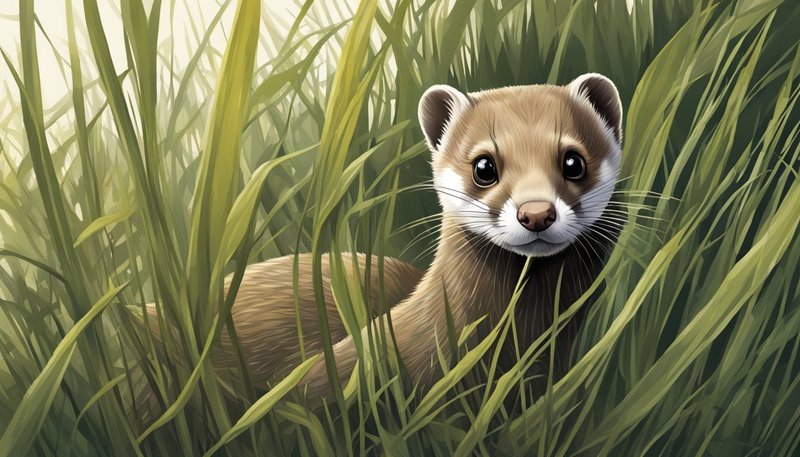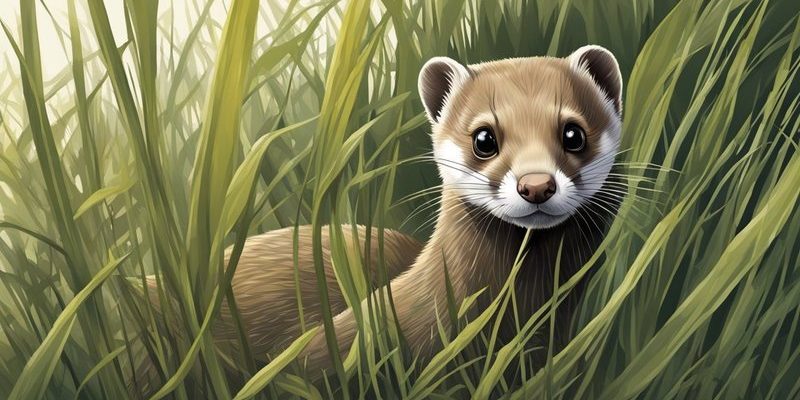
So, what do weasels eat? And how do they manage to hunt such diverse prey? Well, let’s dive into the world of weasels and explore their fascinating dietary habits and hunting tactics. Grab a cup of coffee, and let’s chat about these remarkable little creatures.
Understanding the Weasel’s Diet
Weasels are *carnivorous*, meaning they primarily feast on meat. Their diet is incredibly varied, making them opportunistic hunters. You might be surprised by what they eat! They typically go after small mammals like mice, rabbits, and birds, but they won’t shy away from insects, amphibians, or even fish if the opportunity arises. This flexibility is key to their survival.
One of the reasons weasels are such effective hunters is their size. With their long, slender bodies, they can squeeze into tight spaces where other predators might get stuck. This allows them to reach prey that would be out of reach for larger animals. So, whether they’re darting through thick underbrush or burrowing into small openings, weasels maximize their chances of finding food.
Here’s something interesting: Weasels often hunt using a technique called *stalking*. They’ll sneak up on their unsuspecting prey. You might picture them like a stealthy ninja, using patience and stealth to get close enough for a quick strike. It’s a classic case of brains over brawn!
Primary Prey of Weasels
When it comes to choosing their meals, weasels have a strong preference for certain types of prey. Their primary targets usually include:
- Rodents: Mice and voles make up a significant portion of their diet.
- Lagomorphs: Rabbits and hares are also on the menu, providing a hearty meal.
- Birds: Weasels are known to catch ground-nesting birds and their eggs.
- Insects: Grasshoppers and beetles can also be a snack during the warmer months.
The choice of prey often depends on the local ecosystem and availability. For instance, in areas with abundant mice populations, weasels will hunt them more frequently. It’s all about taking advantage of what’s available!
Weasels also play an important role in controlling prey populations. By keeping the numbers of rodents in check, they help maintain the balance in their ecosystems. So, while they may seem like small players in the grand scheme of nature, their impact is significant.
Hunting Techniques of Weasels
Weasels are like little acrobats when it comes to hunting. Their hunting strategies can be quite varied, and they adapt based on the situation. One of the most common techniques is ambush hunting. They’ll find a good hiding spot and wait silently for an unsuspecting victim to wander by. This patience pays off when they pounce at just the right moment!
In addition to ambush tactics, weasels will also engage in *pursuit hunting*. Imagine a high-speed chase! When they spot their prey, they burst into action, using their speed and agility to chase it down. Their lithe bodies allow them to navigate through obstacles that would slow down larger predators.
Another fascinating tactic is their ability to use *noise and distraction*. Weasels can make sounds that will draw their prey in or confuse them, making it easier for the weasel to get close. It’s like them playing a clever game of cat and mouse—only they are the ones taking the lead!
The Role of Stealth and Speed
Stealth and speed are crucial for weasels. They’re not the biggest or strongest animals, so they rely on their quick reflexes and cunning to outsmart their prey. When stalking, they move slowly and carefully, making sure not to make any noise. You might even say they’re the ninjas of the animal world, slipping through the grass in search of their next meal.
When they spring into action, weasels can run at surprising speeds. They can reach up to 10 miles per hour! That’s pretty fast for such a small creature. This speed allows them to cover ground quickly and catch prey that might be trying to escape.
Here’s the thing: their slender bodies are designed for quick movements and agility. They can twist and turn with ease, which can confuse their prey and give them the upper hand in a chase. This combination of stealth and speed makes the weasel a formidable predator—despite its small size.
Seasonal Changes in Diet
As seasons change, so do the hunting habits and diets of weasels. In spring and summer, when food is plentiful, weasels tend to eat smaller mammals and insects. They take advantage of the lush environment, snatching up whatever they can find.
As winter rolls around, things get a bit trickier. When snow covers the ground, and many animals hibernate, weasels have to adapt. During these months, they may rely more on larger prey, like rabbits. Their thick winter coats help them move through the snow with ease, making them even more efficient hunters.
Additionally, in harsh weather conditions, they might store food. Weasels have a keen instinct that tells them when to stock up for future meals. This behavior helps them survive during leaner times of year when food is scarce.
The Impact of Environment on Weasel Hunting
The environment plays a big role in how weasels hunt and eat. Different habitats provide different types of prey. For instance, weasels in wooded areas may hunt more birds and squirrels, while those in open fields might focus on rodents.
In addition to prey availability, the weasel’s environment affects its hunting strategies. Dense underbrush offers excellent hiding spots for ambush hunting, while open fields might encourage them to rely more on speed and pursuit.
Moreover, factors like weather and human activities can alter their hunting patterns. For example, if a forest is disturbed, it may push prey animals away, forcing weasels to adapt their tactics. It’s a constant dance with nature, and weasels are masters at keeping up with the rhythm.
In conclusion, weasels are fascinating little predators with a highly adaptable diet and a range of hunting strategies. They teach us that size doesn’t always determine power; sometimes, small creatures like weasels can have a big impact on their ecosystems.
Their ability to hunt effectively, adjust to seasonal changes, and adapt to their environment speaks volumes about their resilience. So, the next time you think about these crafty little mammals, remember they’re not just cute little furballs; they’re also skilled hunters playing an essential role in the balance of nature.
Let’s celebrate the weasel—a tiny marvel of the animal kingdom, proving that sometimes, the smallest creatures can pack the biggest surprises!

